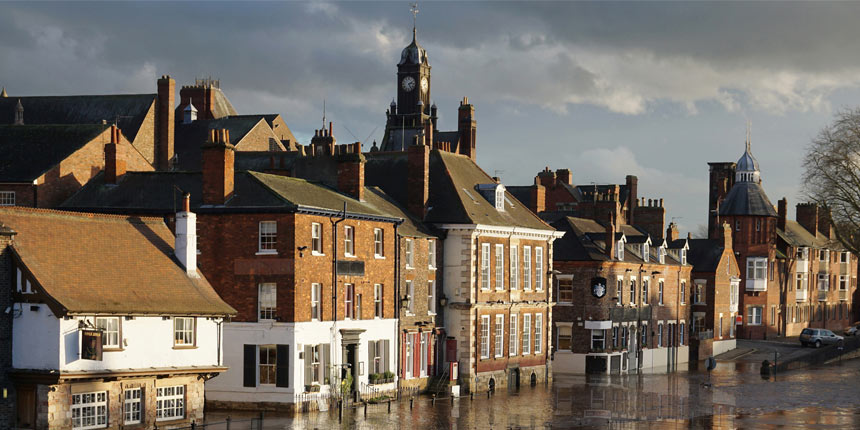Flood Guidance
23 January 2025
The risk of flooding can come from costal inundation, rivers or run-off from drains that are unable to cope with the volume of water.

Flooding is becoming a more regular occurrence.
You can check the risk of flooding in your area by consulting the flood maps published by the Office of Public Works (OPW). These show areas of the country at risk of flood and can be found at floodinfo.ie
Undertaking a flood risk assessment can help shape your actions and your return to normal activities quickly.
As with all risks, planning can make your response in an emergency easier, by making sure everyone knows what they should do to protect property and ensure the safety of people.
There are several ways to protect your buildings including the provision of flood barriers, sandbags, air-brick covers etc. Landscaping can also be used to good effect to divert water away from the buildings, but you must ensure that it is not diverted onto neighbouring properties.
The Risk of Flooding
In Ireland, average rainfall has approximately increased 7%1 over the past 30 years when compared with the period 1961 to 1990. This makes flooding a risk which is likely to become more frequent. Being prepared can help you to limit damage to your property.
Checking your flood risk
The Office of Public Works have produced maps that show areas of the country that are at risk of flooding. You can check to see if your local area is at risk of flooding by visiting floodinfo.ie
Monitoring flooding in your area
If flood risk is likely, there are several ways you can monitor the situation in your local area:
Sign up to the Met Eireann App (on Met.ie) to receive flood warnings by text
Follow weather alerts posted on X (formerly Twitter) from the Office of Emergency Planning @emergencyIE which give live updates during severe weather events
Preparing for flooding
If you know that you are in a flood risk area, there are several ways you can prepare for flooding.
The office of Emergency Planning has published good advice on actions to take during serve weather events. This can be found on winterready.ie
Store essential flood equipment
It’s good to keep essentials handy at all times. Keep buckets, sandbags, spades, wellies, bottled water, gloves and other protective clothing somewhere accessible. These will all be useful if flood waters do start to rise close to your property.
Have a contingency plan
A contingency plan should outline what you need to do in the event of a major incident such as a flood. Keep emergency telephone numbers and your insurance documents to hand so you can let essential people know straight away.
Flood-proofing your property
There are several ways you can protect your property against flooding:
- Flood barriers - boards that can be installed across doorways and windows ahead of the arrival of flood water. These usually slide into a frame pre-attached to the building structure to provide a watertight seal.
- Sandbags - used in conjunction with plastic sheeting to create a flood barrier.
- Air-brick covers - one of the first points of entry of floodwater into a property is via air-brick vents. A plastic cover can be clipped to the framework surrounding air-bricks to prevent the entry of water.
- Non-return valves to drainage systems to prevent backflow of foul water into the property.
- Drainage gullies - installed around your property designed to capture surface water and divert it directly to drains.
- Landscaping - can be used to divert surface water away from a building. Care must be taken to ensure water is not diverted onto neighbouring property where it could cause damage.
What to do during a flood
- Safety comes first, think about leaving before it is too late to move.
- If flood water is about to enter your property turn off the gas, electricity and water but never touch sources of electricity when there is standing flood water.
- Move valuable items to safety. If you can, move them to upper floors.
- Take as much furniture as you can to upper floors. If you can’t move them, lift them onto blocks or bricks to minimise the damage.
- Think about moving cars to higher ground.
Remember, if you have a basement that will be the first area to flood. Flash flooding, especially from a build-up of surface water is a real threat to properties with basements. The water can pour in off the pavement quickly, inundating the rooms.
1Ireland's Climate Averages 1991-2020 - Met Eireann